Achromatic Optics
Definition: optical devices or setups with minimized chromatic aberrations
German: achromatische Optiken
How to cite the article; suggest additional literature
Author: Dr. Rüdiger Paschotta
Achromatic optics are optical devices or setups which have been optimized such that chromatic aberrations are minimized, such that they can be used in a wide range of wavelengths. Most frequently, this refers to optical lenses or objectives, which are essentially combinations of several lenses. Achromatic optical lenses are often just called achromats. The property of being achromatic (essentially insensitive to wavelength changes) is called achromatism. Achromatic optics, in particular doublet and triplet achromatic lenses, have been invented and used already in the eighteenth century.
As the article on chromatic aberrations explains, frequently used parameters are based on refractive index values at certain reference wavelengths. From these, one calculates Abbe numbers such as VD or Vd, which then appear in various formulas for calculating the strength of chromatic aberrations. Such equations allow one to calculate parameter combinations (e.g., concerning used materials, curvature radii and spacings between optical elements) for which the axial and/or transverse chromatic aberrations vanish, typically at two or three different wavelengths.
Example: Achromatic Doublet Lens
As an example, we consider chromatic aberrations of a lens. A first simple version is a biconvex singlet lens made from BK7 glass, with curvature radii of 103 mm on both surfaces. The substantial chromatic aberrations of that lens are demonstrated in Figure 1, where it has been assumed that a collimated laser beam with an initial beam radius of 1 mm hits that lens. Obviously, the focus position has a substantial wavelength dependence.
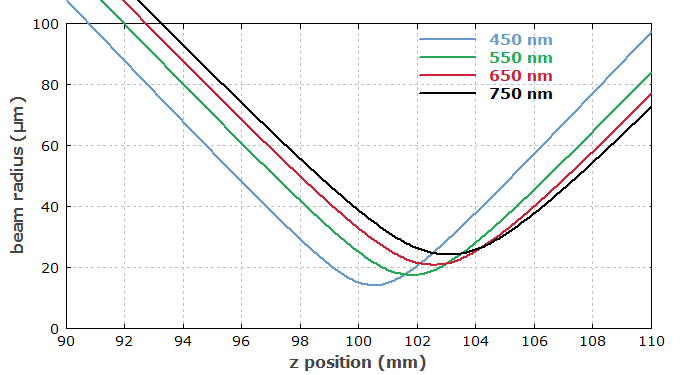
(Note that the use of a biconvex lens for focusing a collimated beam is not ideal in terms of spherical aberrations, but this aspect is not relevant for the current discussion.)

For improving the situation, we can now use an achromatic lens doublet, consisting two parts (see Figure 2): a biconvex lens made of BK7 and concave-convex lens made of SF2 (a flint glass). The basic idea is to realize an overall focusing lens by combining a strongly focusing and a less strongly defocusing lens, where the latter exhibits stronger chromatic dispersion. Although the defocusing effect of the second lens is weaker than the focusing effect on the first one, its chromatic aberrations can compensate those of the other lens.
The considered doublet lens design has been numerically optimized such that we obtain a focal length close to 100 mm (measured from the middle of the lens at z = 2 mm) in the wavelength range from 400 nm to 800 nm. The curvature radius on the left side has been fixed at 60 mm, and the other two curvature radii were subject to optimization. The inner radii of curvature of the two lenses are required to be the same, so that the two lenses can be contacted (e.g. cemented together), forming a single optical element and minimizing reflection losses. Note that for the given focal length the double lens requires a stronger curvature due to the defocusing effect of the flint lens.
Figure 3 shows the resulting foci; one can see that the focus positions agree quite well for three very different wavelengths.
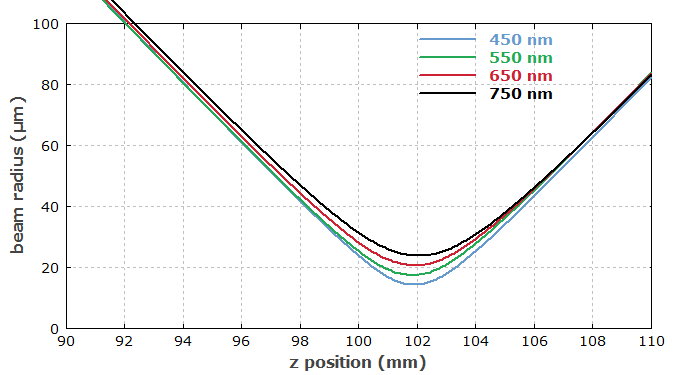
Figure 4 shows the residual wavelength dependence of the focal length. One can see that the chromatic compensation is good but not yet perfect.

Other doublet lens designs are flat on one side (plano-concave designs), and one can also realize defocusing achromatic lenses (negative achromats). In some cases, a lens doublet is not contacted, but the two lenses are only placed in a common housing (air-spaced doublets). Furthermore, there are cylindrical lenses designed as achromats.
With such a doublet lens design, one can adjust the parameters such that the axial chromatic aberrations exactly vanish for two wavelengths (typically in the red and blue spectral region). By combining three different materials (making aspheric triplets), it is possible to make a so-called apochromatic lens (apochromat), where the chromatic aberrations vanish for three different wavelengths. Although in principle the distortions at other wavelengths are not limited by such conditions, they are typically smaller for an apochromat at least within a certain wavelength range.
In the same way as other lenses, achromats can be optimized for additional requirements such as minimizing spherical aberrations and coma in certain situations, and can be equipped with anti-reflection coatings. Also, there are mounted and unmounted achromats.
Particularly high performance in terms of the magnitude of remaining chromatic aberrations can be achieved with superachromatic lens designs, involving fluoride glasses and requiring particularly tight fabrication tolerances.
There are also other types of achromatic lenses, which are based on diffractive optics. Here, the operation principle is entirely different from that of the lens doublets as explained above.
Achromatic Prisms
Optical prisms are often used for obtaining a wavelength-dependent deflection angle for the light beam. In some cases, however, it is desirable to obtain a certain deflection angle which is about the same for a wide range of wavelengths. Such a performance can be achieved with essentially the same basic approach as for an achromatic lens doublet: one can combine two prisms made from different optical materials, which may be contacted to obtain a single prism.
It is also possible to design composite prisms such that the average deflection angle in some wavelength range is about zero, but a substantial wavelength dependence of that angle is achieved. That is of course not an achromatic design.
Achromatic Waveplates
There are also achromatic waveplates, but in this context a different kind of chromatic distortion is reduced: the wavelength dependence of the optical retardance, i.e., of the difference of the optical phase changes caused for two orthogonal polarization directions. Such devices can be made by combining materials with different chromatic dispersion (e.g. quartz and MgF2), which can have a nearly constant retardance over a very wide spectral range (hundreds of nanometers).
Applications of Achromatic Optics
The main application of achromatic optics (in particular, on a chromatic lenses) is in imaging systems, as needed for photography, microscopy and video recording, for example. In many cases, it is not sufficient to use a simple doublet lens; instead, one requires a more complex objective, containing multiple lenses. The typical approach for compensating the chromatic aberrations of such a system is not to build it from achromats only, but rather to find an optical design where only the over all chromatic aberrations are more or less compensated. Of course, chromatic aberrations are typically only one of several types of distortions which need to be minimized, and additional requirements such as a compact design or highlight throughput can make it even more difficult to find a good compromise between all requirements.
Achromatic optics are not only required in the visible spectral region, but also for infrared and ultraviolet light. Particularly strong dispersion is to be compensated in the ultraviolet spectral region, but there are also applications in the infrared where two or more very different wavelengths or a very wide range of wavelengths are involved. For example, achromats are beneficial for focusing or collimating the output of supercontinuum sources or in other cases with ultrabroadband ultrashort pulses.
Use of Reflective Optics
In some applications, it is possible to avoid any chromatic aberrations by using reflective optics instead of lenses. Curved mirrors, which can be used for focusing a beam, for example, are naturally achromatic; this applies even to dielectric mirrors, despite the wavelength dependence of the used multilayer materials.
Suppliers
The RP Photonics Buyer's Guide contains 58 suppliers for achromatic optics. Among them:

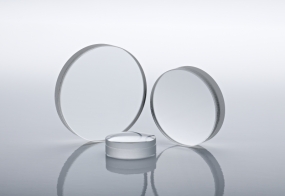
Knight Optical
Knight Optical's premium-quality achromatic optics are ideally suited for projects demanding optimum minimisation of chromatic aberrations. Our extensive range of components includes stock or customised retarders as well as custom-made lenses (such as IR doublet and relay varieties) to meet your project’s exact requirements.


Schäfter + Kirchhoff
We offer fiber couplers like the laser beam couplers series 60SMS or the fiber collimators series 60FC or series 60FC-F with fine-focussing mechanism with achromatic and even apochromatic optics (corrected for 400 – 640 nm).

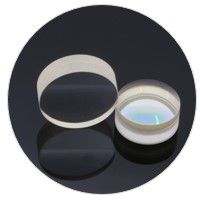
Shanghai Optics
Shanghai Optics offers a large variety of custom achromatic lenses for our customers including achromatic spherical and aspherical lenses, achromatic singlets, doublets and triplets. Combined with one of our advanced AR coatings (covering 400–700 nm, 650–1050 nm, 1050–2500 nm), these optimized lenses are ideal for ensuring high resolution image quality and durability. With our in-house state-of the-art metrology and professional testing personnel, Shanghai Optics is able to provide a full range of inspection reports and CoC (Certificate of Conformance) for full optical characterization such as surface quality, dimensions, centricity, coating transmittance/reflectance (with SHIMADU UV3600 spectrophotometer), and overall/partial surface accuracy (with 6-inch ZYGO interferometer). FAI inspection reports are available upon request.
Questions and Comments from Users
Here you can submit questions and comments. As far as they get accepted by the author, they will appear above this paragraph together with the author’s answer. The author will decide on acceptance based on certain criteria. Essentially, the issue must be of sufficiently broad interest.
Please do not enter personal data here; we would otherwise delete it soon. (See also our privacy declaration.) If you wish to receive personal feedback or consultancy from the author, please contact him e.g. via e-mail.
By submitting the information, you give your consent to the potential publication of your inputs on our website according to our rules. (If you later retract your consent, we will delete those inputs.) As your inputs are first reviewed by the author, they may be published with some delay.
See also: chromatic aberrations, Abbe number, lenses, prisms, waveplates, aspheric optics
and other articles in the category general optics
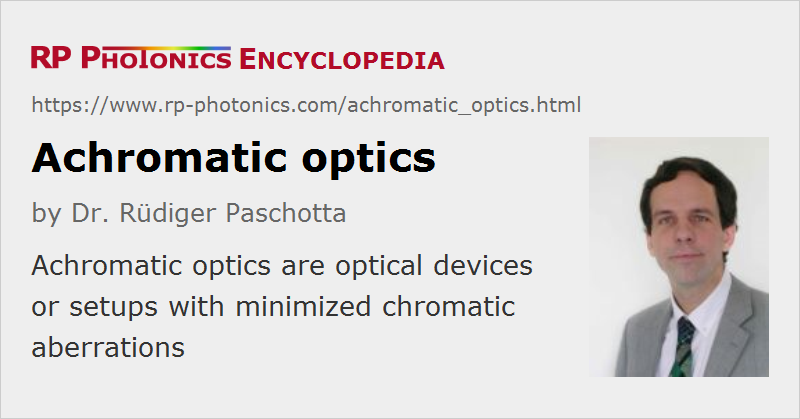 |




If you like this page, please share the link with your friends and colleagues, e.g. via social media:
These sharing buttons are implemented in a privacy-friendly way!